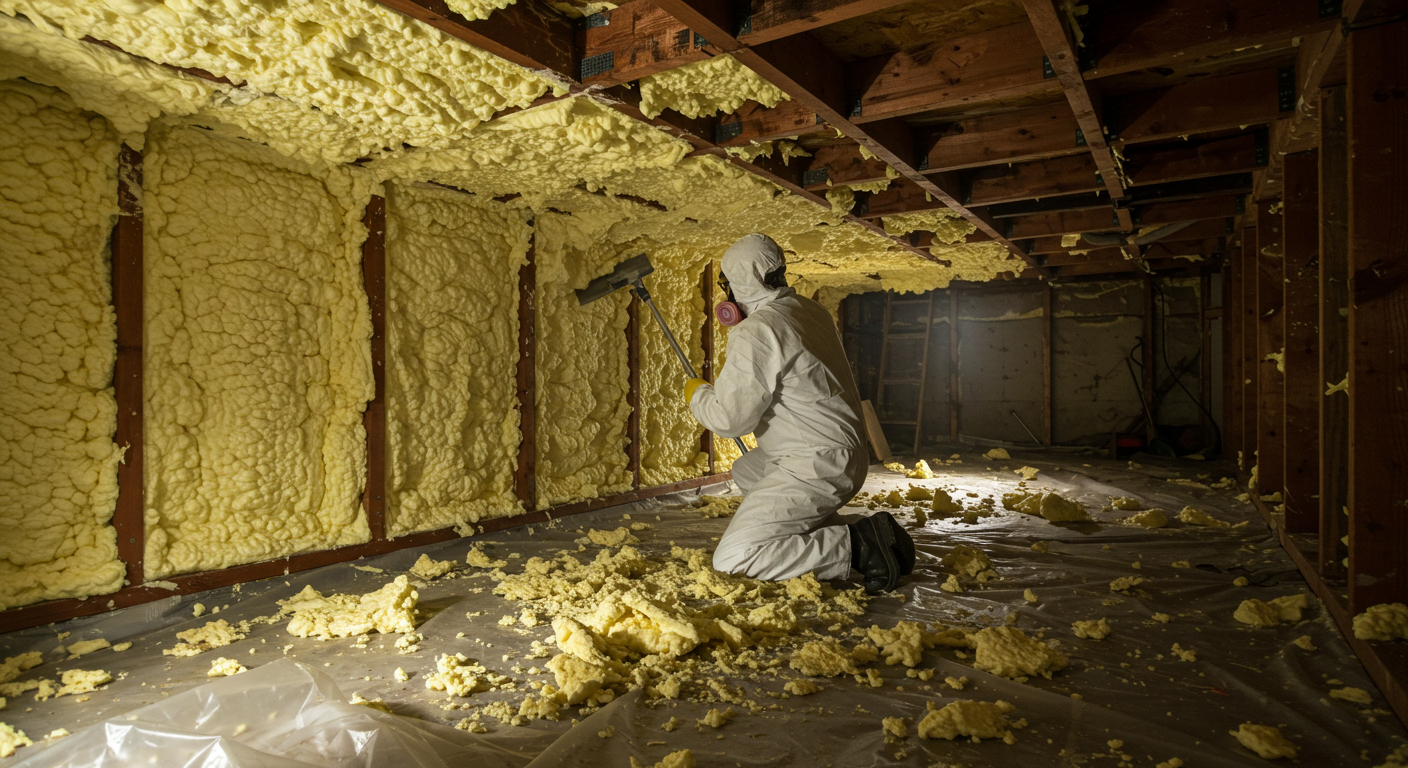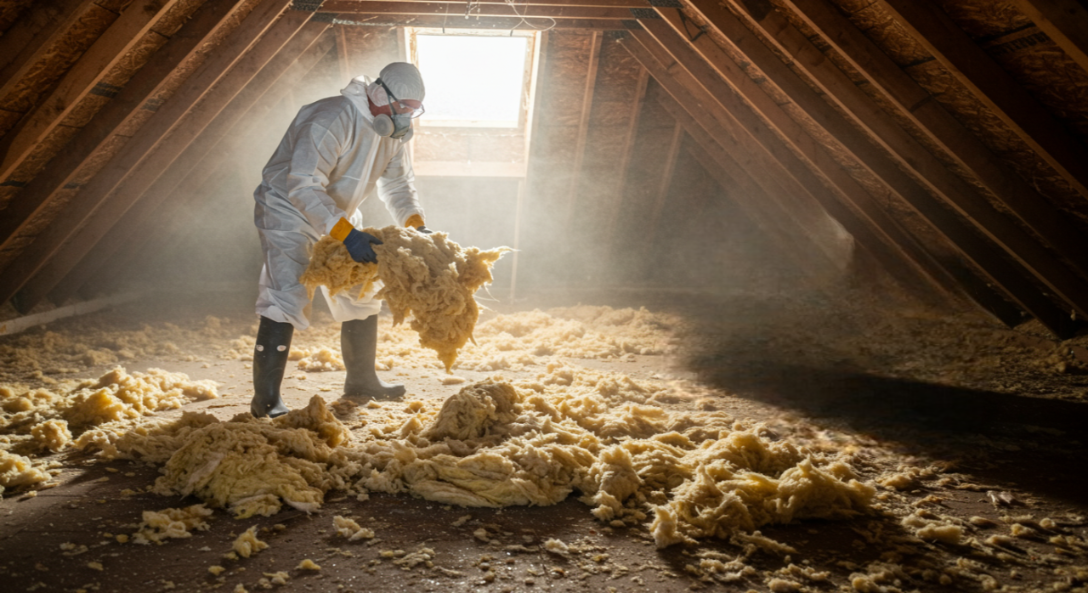
Most insulation projects involving spray foam do not require removing existing insulation. But removal becomes necessary when the old insulation is wet, contaminated, structurally degraded, or obstructs full spray foam adhesion. The decision depends on the condition of the existing material, local code requirements, and whether open-cell or closed-cell foam is being applied.
Spray foam must bond directly to the substrate. Any material that impedes adhesion such as matted fiberglass, deteriorated cellulose, or pest-infested batts must be removed. Failing to clear these layers can trap moisture, cause uneven coverage, or lead to system failure. This article outlines when and why removal is required, based on real-world conditions and technical data.
Nevada Urethane brings first-hand knowledge from insulation removal and spray foam installation in varied climates, especially dry-to-high desert conditions typical across Nevada. This information is based on direct job-site experience, manufacturer specifications, and regional code compliance insights.
Fiberglass or cellulose that has compacted or lost structure cannot provide proper airflow or R-value retention. Foam cannot adhere effectively over such layers.
Wet insulation from roof leaks or vapor condensation poses health risks and weakens the building envelope. Mold-laden insulation must be fully removed before spray foam is installed.
Rodents, insects, or birds may nest in older insulation, leaving contamination. These materials create odor and air quality issues.
Spray foam requires clear access to all cavities and surfaces. Obstructions reduce performance and create uneven thermal barriers.
| Condition | Remove Required? | Reason for Removal |
|---|---|---|
| Wet or Moldy Material | Yes | Moisture issues, health risks |
| Pest-Contaminated Batts | Yes | Odors, droppings, reduced air quality |
| Fully Intact Fiberglass | Sometimes | Only if foam cannot make surface contact |
| Settled Cellulose | Yes | Causes inconsistent foam depth |
| Spray Foam Over Old Foam | Rarely | Only if degraded or poorly installed |
| Code-Mandated R-Value Change | Yes | New code requires full cavity upgrade |
| Specification | Open-Cell Foam | Closed-Cell Foam |
|---|---|---|
| R-Value per inch | R-3.5 to R-4.0 | R-6.5 to R-7.0 |
| Vapor Barrier | No | Yes |
| Structural Rigidity | Low | High |
| Expansion Rate | High (100x) | Moderate (30-50x) |
| Surface Adhesion Requirement | High | High |
| Best for | Interior walls, soundproofing | Roof decks, basements |

In Nevada’s arid climate, attic insulation faces large daily thermal swings. Poorly sealed insulation with air gaps exacerbates cooling loads. Spray foam performs best when applied directly to clean decking or framing. In rural and agricultural zones, rodent-damaged insulation is more common, especially in older structures.
Local building codes in Nevada counties (e.g., Washoe, Clark, Lyon) may require removal when energy upgrades are part of larger remodeling permits. These codes often specify full cavity fill and air sealing, which spray foam achieves only on exposed substrates.
If cellulose insulation shows any signs of dampness or settlement, it should be vacuumed out. Even small retained pockets can affect foam performance and allow airflow.
Look for signs of water stains, musty smell, pest droppings, or compressed materials. These indicate removal is needed before spray foam.
Not reliably. Cellulose settles and can shift, affecting foam adhesion and leading to performance gaps.
Selective removal can be done, but any compromised sections must be cleared for proper foam installation.
Professional crews use vacuum systems and containment practices to limit debris spread and protect interior finishes.
Need clarity on whether your insulation needs to be removed? Nevada Urethane provides detailed inspections and expert recommendations based on years of installation experience across residential, commercial, and agricultural buildings.
Phone: (775) 397-2820 Email: [email protected]
Typically 4–8 hours for an average-size attic, depending on accessibility and material type.
Yes, removal can temporarily raise dust and particles. Use air scrubbers or HEPA filtration during removal to reduce impact.
Yes. Programs like NV Energy’s Energy Smart initiative offer rebates for insulation upgrades including foam installation. [Source: NV Energy, 2025 Efficiency Rebates Guide]
Only if the material is clean, dry, and fully recessed. This is rare. Leaving compromised material reduces performance and voids most foam warranties.
Foam may not adhere correctly, resulting in peeling, gaps, or failure to meet R-value requirements. This can cause long-term energy loss.